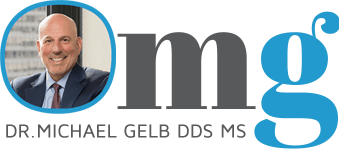Breastfeeding goes back thousands of years, as in other mammalian species for good reason. At birth, the infant is nourished by breastfeeding which coordinates the respiratory system, cardiovascular system and orofacial reflexes. There is obligate nasal breathing in the human infant during the first 6 months of breast suckling achieved through an epiglottic-palatal lock. The breast is milked against a flat hard palate while nasal breathing proceeds uninterrupted.
The tongue must contact the hard palate during feeding and swallowing for proper oronasal and maxillary development. Humans are preferentially encoded according to Singh to suckle from the mammary glands at birth. The posterior pharyngeal airway and nasal airway are enhanced with breastfeeding.
According to Chele Marmet, a speech pathologist who conceptualized and pioneered lactation in the world, babies should be allowed to breastfeed as long as they want to. She feels the age is somewhere between 9 months and 3 years of age, which is normal. She also feels if the baby wants to breastfeed longer, it is usually because they have allergies and need the extra time in order to develop their immune system. A recent study found that 2-5 months of breast feeding led to significantly lower levels of sleep disordered breathing.
The breastfeeding issue is a contentious topic around the world. Remembering that in under developed nations, children are usually breast fed for upwards of 3-4 years simply because of the lack of other adequate nutrition. In western cultures, cessation of breast feeding as early as 3 months post-partum is a culturally driven modality. We live in a busy world where mothers return to the work force after 2-3 months. If we look at the maxillary and mandibular jaw patterns of the tribal cultures, they are normal if not even larger than those of children in developed nations. These kids breastfeed for an average of three years.
Bottle Feeding
Bottle feeding alters the environment for achieving an ideal oronasal complex and posterior pharyngeal airway. There is no need for suckling with an artificial nipple, and the swallowing mechanism is altered as well as nasal breathing patterns. The bones “deform” around the artificial nipple, the tongue is displaced, and the teeth erupt abnormally.
A recent study showed that 90% of young children developed malocclusion before age 5, correlated with 90% bottle feeding. The bottle feeders are more prone to oral respiration or mouth breathing and will develop class 2 or retrognathic profiles.
Without the tongue up to the palate, pressing on the palate during feeding, functional development does not take place, which leads to a vaulted, narrow, constricted palate with increases nasal resistance. This leads to upper airway resistance syndrome and nasal obstruction.
Orthodontic literature is chock full of references on the altered growth patterns observed with mouth breathing with no lip seal. The dental profession should promote breast feeding practices and discourage pacifier use whenever possible to promote proper development of the airway and breathing.
Nasal breathing with proper tongue placement and lip seal are critically important to ideal growth and development of the nasal complex, cheekbones, jaws, and airway. Sleep quality is improved dramatically particularly after palatal expansion and removal of tonsils and adenoids.
Abnormal gene – environmental interactions take place with bottle feeding.
Environmental factors which alter ideal growth and development and narrow the airway are:
- Changes in feeding patterns
- Soft modern diet
- Trauma
- Pacifier use
- Digit sucking
- Mouth breathing
- Swallowing habits
What can a mother do to assess their child’s breathing?
- Have an ENT or pediatric ENT check the nasal airway
- Check your child’s breathing pattern. Mouth breather or nose breather with lip seal.
- Check the swallowing pattern. The tongue should be up on the palate.
Possible treatment
- Myofunctional therapy
- Early orthodontic intervention such as BioBloc (Mew and Hang)
- Physiologic expansion therapy or induced maxillary morphogenesis(Singh)
- Adenotonsillectomy
- Allergy testing (wheat, dairy, environmental)
To summarize, breastfeeding is programmed into the survival of our species with definite advantages in all stages of life. It provides immunologic protection to early respiratory viral exposures and may reduce proliferation of airway lymphadenoid tissue.
Kevin Boyd, a Darwinian Dentist conducting his PhD thesis on modes of infant and early childhood feeding, sees a very high prevalence of Sleep Disordered Breathing SDB and Obstructive Sleep Apnea in kids associated with a very high prevalence of behavioral disorders and ADHD as well as a high prevalence of narrow jaws and crooked teeth. He believes that our faces started to shrink after women returned to the textile mill workplace post industrial revolution and couldn’t breast feed for months or years as before. Of course our soft sugar fueled diet doesn’t help.
For more information on how to find a myofunctional therapist, trained orthodontist, lactation consultant, breathing specialist, ENT, dentist etc see our website aapmd.org.
Special thanks to Joy Moeller, Patricia McBride, Kevin Boyd and Dr David Singh – Epigenetic Orthodontics.







